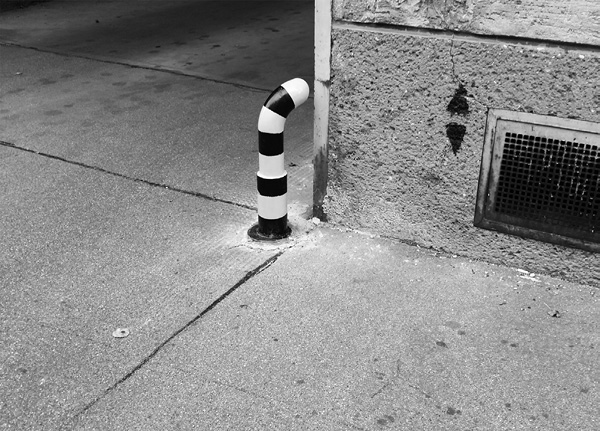
BOLLARDS: THE COMEDY OF HYPER-INDUSTRIALIZATION
first performed on March 2, 2016
Dunedin Fringe Festival Club, Dunedin, New Zealand
performed three times in 2016
ANDREW CHOATE
Los Angeles, CA
048942028p048942028r048942028e048942028z048942028@048942028a048942028n048942028d048942028r048942028e048942028w048942028c048942028h048942028o048942028a048942028t048942028e048942028.048942028u048942028s
andrewchoate.us
BOLLARDS: THE COMEDY OF HYPER-INDUSTRIALIZATION
ANDREW CHOATE
Bollards are short posts, often made of concrete, that form obstructions to traffic in order to protect buildings, equipment, and/or pedestrians. Their use has been traced from ancient Rome, where they doubled as mile markers and tethering posts, to medieval Europe, where captured enemy cannons were placed in the ground to signify success on the battlefield as well as to demarcate town boundaries. The most common shapes and sizes we see today are still based on the look and feel of cannon tips.
The term bollard was first used as the term for a post on a ship, a place for securing ropes. Bollard is traced back to the Old Norse bolr, the Middle High German bole, the German Bohle, and the Middle English bole: the stem or trunk of a tree. Bole, in turn, is related to baulk, the Dutch balk, the Old High German and the Old Saxon balco, the Old Frisian balca, and the Old Norse bálka, meaning grave-mound, a dividing ridge of land.
Bollards represent the things we see all the time, but don’t pay attention to. This performance uses photographs of bollards along with poems written in a form to conceptually represent the landscape as a way of focusing on how to better interact with the environment and everything it includes.